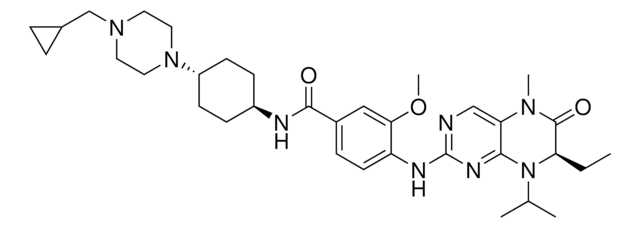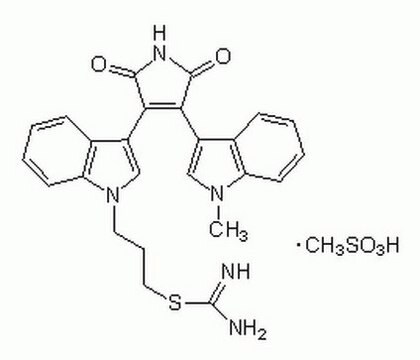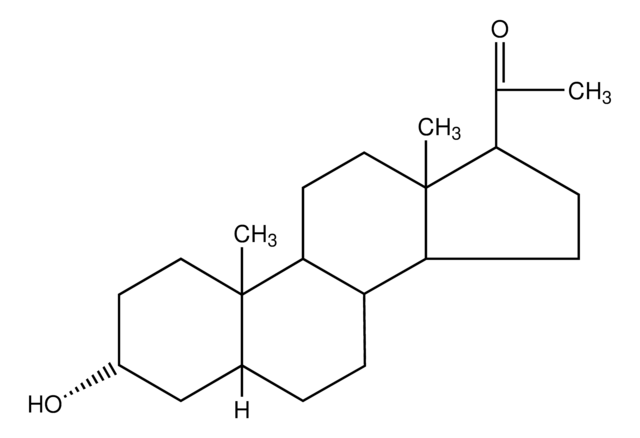G2171
GW843682X
≥98% (HPLC), solid
Synonyme(s) :
5-(5,6-dimethoxy-1H-benzimidazol-1-yl)-3-{[2-(trifluoromethyl)-benzyl]oxy}thiophene-2-carboxamide, GW843682
About This Item
Produits recommandés
Pureté
≥98% (HPLC)
Forme
solid
Couleur
off-white
Solubilité
DMSO: >10 mg/mL
Auteur
GlaxoSmithKline
Température de stockage
2-8°C
Chaîne SMILES
COc1cc2ncn(-c3cc(OCc4ccccc4C(F)(F)F)c(s3)C(N)=O)c2cc1OC
InChI
1S/C22H18F3N3O4S/c1-30-16-7-14-15(8-17(16)31-2)28(11-27-14)19-9-18(20(33-19)21(26)29)32-10-12-5-3-4-6-13(12)22(23,24)25/h3-9,11H,10H2,1-2H3,(H2,26,29)
Clé InChI
JSKUWFIZUALZLX-UHFFFAOYSA-N
Application
- to study the influence of PLK1 inhibition on Wee1 (G2 check point kinase), cyclin-dependent protein kinase 1 (Cdc2)–Yp15, expression in melanoma cells
- to determine if PLK1 inhibition decreased the survival of hamartin and tuberin deficient cells
- to investigate if inhibitors of PLK1 and aurora kinases have a synergistic antimitotic impact in HeLa cells
Actions biochimiques/physiologiques
Caractéristiques et avantages
Code de la classe de stockage
11 - Combustible Solids
Classe de danger pour l'eau (WGK)
WGK 3
Équipement de protection individuelle
dust mask type N95 (US), Eyeshields, Gloves
Certificats d'analyse (COA)
Recherchez un Certificats d'analyse (COA) en saisissant le numéro de lot du produit. Les numéros de lot figurent sur l'étiquette du produit après les mots "Lot" ou "Batch".
Déjà en possession de ce produit ?
Retrouvez la documentation relative aux produits que vous avez récemment achetés dans la Bibliothèque de documents.
Notre équipe de scientifiques dispose d'une expérience dans tous les secteurs de la recherche, notamment en sciences de la vie, science des matériaux, synthèse chimique, chromatographie, analyse et dans de nombreux autres domaines..
Contacter notre Service technique








